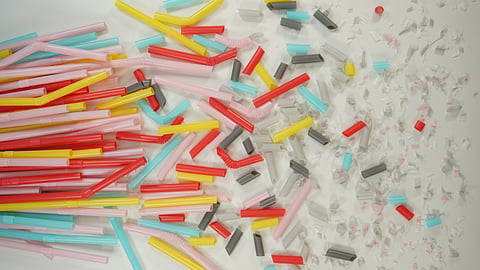

Since the 1950s, when large scale production of plastic began, plastics with their high durability and other beneficial properties have expanded exponentially to become indispensable in all walks of life. You talk about any sector—food, health, transportation, electronics, etc. Plastics have replaced all traditional materials. However, the many benefits of plastics have come at a great cost to society and the environment. The indiscriminate use of plastics and the inability to manage the consequently generated plastic waste has resulted in a global problem of microplastics.
Microplastics are defined as particles or pieces of plastic that measure less than 5 mm in diameter. Primary microplastics that are manufactured specifically in these dimensions to be used for certain purposes such as microbeads, abrasives and resin beads for personal care and cosmetic products (PCCPs), cleaning agents, 3D printing These are the forms in which raw forms of plastic are transported to production facilities for further processing.
Secondary microplastics, on the other hand, are generated due to fragmentation of larger plastic materials due to weathering and radiation. Since most of the plastic waste eventually reaches the oceans via different water channels, the process of the generation of secondary microplastics often takes place in the oceans at an extremely slow rate. Warnings of such fragmentation of plastic objects in the oceans started coming as early as the 1970s, but it was largely neglected. It is only recently that this problem has gained attention and its effect on human health is being evaluated.
Microplastics have been reported to be ingested by marine organisms directly and can be transferred from prey to predator. Through edible fish, crabs, oysters, mussels, and other sources of sea food, microplastics can enter human systems.
In fish the predatory behaviour gets affected due to confusion between these micro beads and an actual prey, resulting in malnutrition and gradual built up in gills, gut and stomach. Accumulation of microplastics in tissues can lead to swelling, blockage, cytotoxicity, oxidative stress, disruption of energy flow and other unfavourable consequences.
Apart from these effects, chemicals that are added to plastics to make them durable, resistant, and flexible may add to the toxic profiles of microplastics. Further, microplastics also act as a medium on to which microorganisms, organic and inorganic pollutants, present in the ocean may get absorbed.
Microplastics have been detected to carry compounds such as persistent organic pollutants (POPs) and phthalates, bisphenol A (BPA), bisphenone, triclosan, organotin, brominated flame retardants and various pharmaceutical drugs; heavy metals like lead, nickel, cadmium, and zinc depending on the environments from where they are collected.
Such absorbed pollutants like pesticides, polychlorinated biphenols (PCBs) and disease-causing microbes like Vibrio species can possibly lead to infections, genetic changes, carcinogenicity, metabolic disorders, and disrupted endocrine systems.
The risks posed by ingested microplastics to human health are still to be investigated in detail. In vitro studies have been shown to result in red blood cell coagulation, impairment in renal functions, promotion of bone loss and toxicity in brain cell types. They may also lead to altered levels and activity of neurotransmitters, resulting in impaired neuronal functions. Microplastics have been reported to modulate the immune system, incorrectly stimulating immune cells that may lead to autoimmune disorders.
The oxidative stress and prolonged inflammatory signals induced by accumulated microplastics may also lead to the development of various kinds of cancers. A recent study also shows a correlation between exposure to microplastics and Inflammatory Bowel Disease ( IBD). Ex vivo studies indicated the possibility of nanoparticles being transported across the placenta as well. Microplastics by themselves or via the microorganisms carried on them can disturb the gut microbiome, facilitating the proliferation of various disease-causing opportunistic species.
With such serious health implications, reducing microplastics is critical. This necessitates efficient waste management, increasing the shelf life and recycling of plastic items, as well as reducing plastic use in everyday life and switching to alternative sustainable materials.
Join MedBound - an ecosystem for students and professionals of medical and health sciences.
Subscribe to MedBound Times - one of the best medical blogs for medical students.
